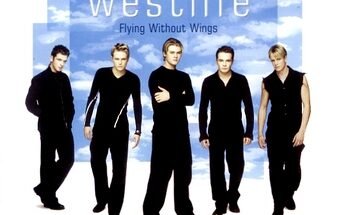Madonna has long been hailed as the Queen of Pop, not just for her knack for reinvention and cultural influence, but also for her evolution as a vocalist. While critics have often fixated on her showmanship, songwriting, and provocative imagery, her voice tells a compelling story of growth, experimentation, and adaptation. From the bubblegum exuberance of her early 1980s hits to the textured, emotionally nuanced performances in her later career, Madonna’s vocal journey is as transformative as the persona she constantly reshaped.
Early Years: Youthful Energy, Technical Criticism
When Madonna burst onto the scene in the early 1980s with hits like “Holiday,” “Lucky Star,” and “Borderline,” her voice was unmistakably energetic, girlish, and nasally bright. It was a sound that matched the dance-pop era: fresh, simple, and direct. However, from the start, she faced criticism for her vocal technique. Music purists and critics often dismissed her singing as limited in range and control. Her early performances were more about charisma and rhythm than technical prowess, and some accused her of relying too heavily on studio production to polish her sound.
Yet, what she lacked in traditional vocal skill, Madonna made up for with personality. Her voice had a raw immediacy, a brashness that connected with a young audience eager for rebellious female figures. Even without vocal acrobatics, she commanded attention through attitude—a trait that would remain constant even as her singing style evolved.
The ‘Like a Prayer’ Era: Emotional Expansion
The turning point in Madonna’s vocal development came with the release of Like a Prayer (1989), an album that marked a new depth both thematically and vocally. Songs like “Oh Father” and the title track featured a more emotional, almost gospel-influenced delivery. This was Madonna stepping away from the electronic pop that had defined her and embracing a richer, fuller sound.
In this period, Madonna began exploring her lower register more confidently. Her voice conveyed a sense of vulnerability and strength, often within the same song. This shift did not go unnoticed—critics praised her for pushing past her vocal comfort zone. The improvement in vocal technique was subtle but significant: better breath control, more variation in tone, and a clearer emotional connection to the lyrics.
The ’90s: Experimentation and Control
The 1990s saw Madonna delving into new genres and vocal territories. Albums like Erotica (1992) and Bedtime Stories (1994) showed her embracing a sultry, subdued tone. Songs such as “Secret” and “Take a Bow” required a smoother, more restrained approach, and Madonna adapted accordingly. She shifted away from her nasal delivery and leaned into a breathier, more intimate vocal style.
By the time she starred in the 1996 film Evita, Madonna had undergone vocal training to prepare for the demanding role of Eva Perón. This period marked a pivotal moment in her vocal journey. She extended her range, improved her control, and adopted a classical clarity not previously present in her recordings. Tracks like “Don’t Cry for Me Argentina” demonstrated not just technical improvement, but an emotional gravity that surprised many of her earlier critics.
The 2000s: Electro Pop Meets Mature Voice
As she entered the new millennium, Madonna merged her refined vocal skills with a return to electronic and dance-pop. Albums such as Music (2000), American Life (2003), and Confessions on a Dance Floor (2005) showcased a voice that was both playful and grounded. Tracks like “Hung Up” and “Sorry” were built for the dancefloor but delivered with a confidence and maturity born from decades of experience.
Notably, during this time, Madonna began favoring a deeper vocal register. Her voice, now seasoned and lived-in, had lost some of the girlish quality of her early years but gained a soulful weight that added complexity to her music. The deeper tone also helped her stand out amid the auto-tuned pop landscape that dominated the charts.
Recent Years: Vulnerability, Experimentation, and Legacy
In her later albums, such as MDNA (2012), Rebel Heart (2015), and Madame X (2019), Madonna continued to push boundaries—both musically and vocally. She experimented with global influences, trap beats, and spoken-word interludes. Her vocals, often layered and electronically enhanced, reflected the avant-garde nature of these projects.
However, behind the production, Madonna’s voice revealed a reflective and world-weary artist. On songs like “Ghosttown” and “Killers Who Are Partying,” she conveyed a rawness that felt more human than ever. Though age inevitably altered her vocal texture—introducing a raspiness and reducing her upper range—it also brought a gravitas to her work. Her expressive delivery carried a sense of urgency and introspection, making her late-career material emotionally resonant in new ways.
From Pop Princess to Vocal Storyteller
Madonna’s vocal journey mirrors her personal and artistic evolution. She began as a street-smart club kid with a bold attitude and a thin, untrained voice. Over time, she honed her craft, embracing technique and expression in equal measure. Rather than settling into a static vocal identity, she chose to explore, adapt, and grow—even at the risk of criticism.
What makes Madonna’s vocal transformation so compelling is that it reflects her broader ethos: reinvention with purpose. Her voice has become a vessel for storytelling—not just of love and sex, but of loss, politics, motherhood, and self-discovery. She may not be remembered as a technical virtuoso, but she will be remembered as a vocalist who never stopped evolving.
In the end, Madonna’s voice is not just a sound—it’s a chronicle of a life lived loudly, defiantly, and on her own terms.



